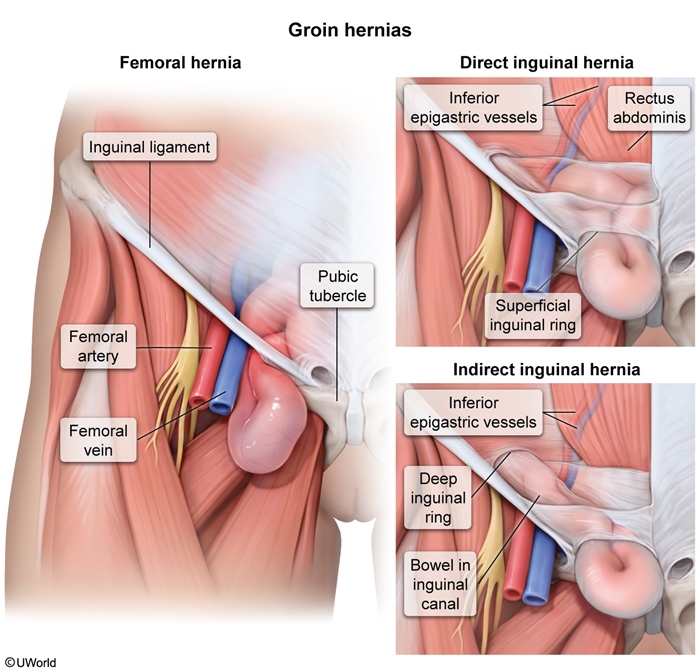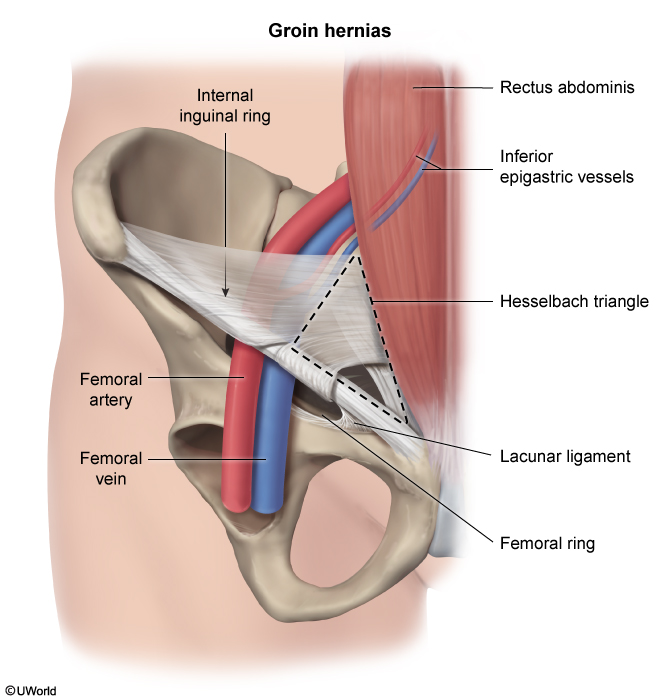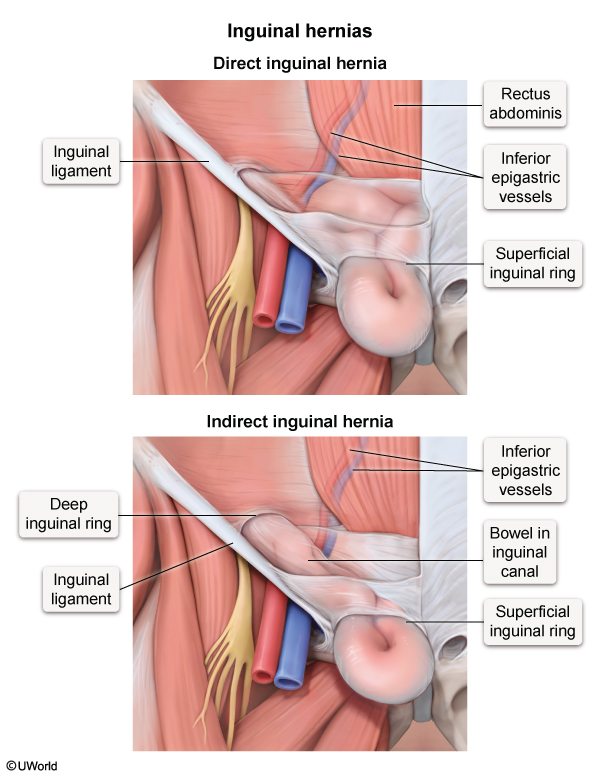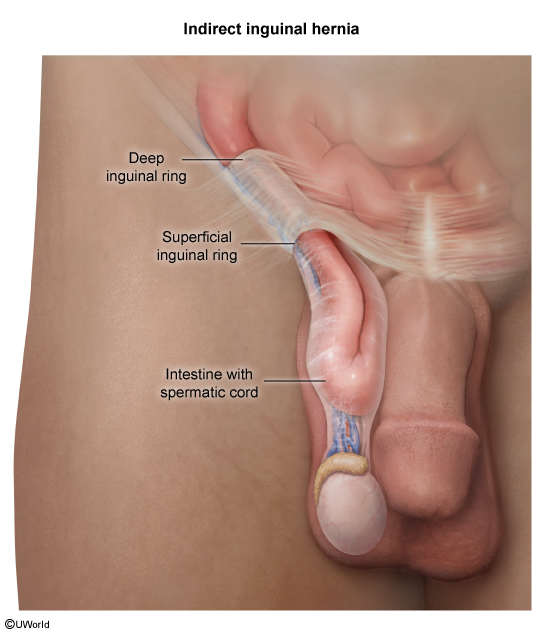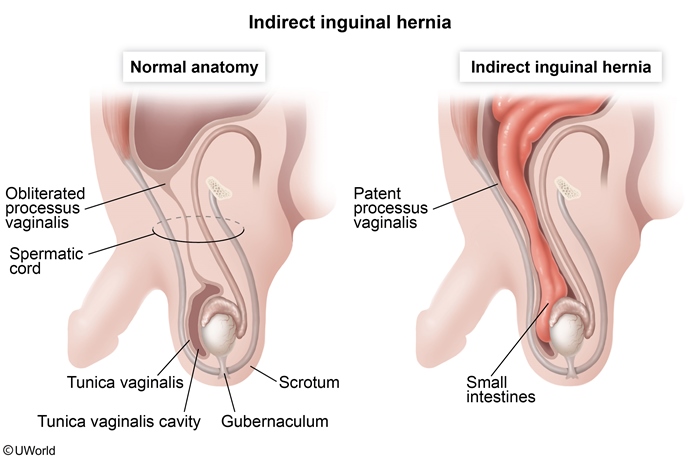Groin Hernias
Article Sections
Introduction
Groin hernias are protrusions of intraabdominal contents through a weak point in the abdominal wall. The two types are inguinal hernias (direct and indirect) and femoral hernias (Figure 1). Patients typically present with groin swelling and discomfort aggravated by activities that increase intraabdominal pressure (eg, heavy lifting, prolonged standing). Uncomplicated hernias may be monitored or surgically repaired on an elective basis. However, hernias that become incarcerated (ie, trapped) or strangulated (ie, ischemic) require emergent surgical intervention.
Risk factors
Groin hernias occur when there is a weakness or defect in the abdominal wall that allows protrusion of the abdominal lining and intraabdominal contents (eg, omentum, bowel). This can occur due to a congenital abnormality or an acquired disruption in the fibromuscular integrity of the abdominal wall and fascia. Risk factors include:
Continue Learning with UWorld
Get the full Groin Hernias article plus rich visuals, real-world cases, and in-depth insights from medical experts, all available through the UWorld Medical Library.
Figures
